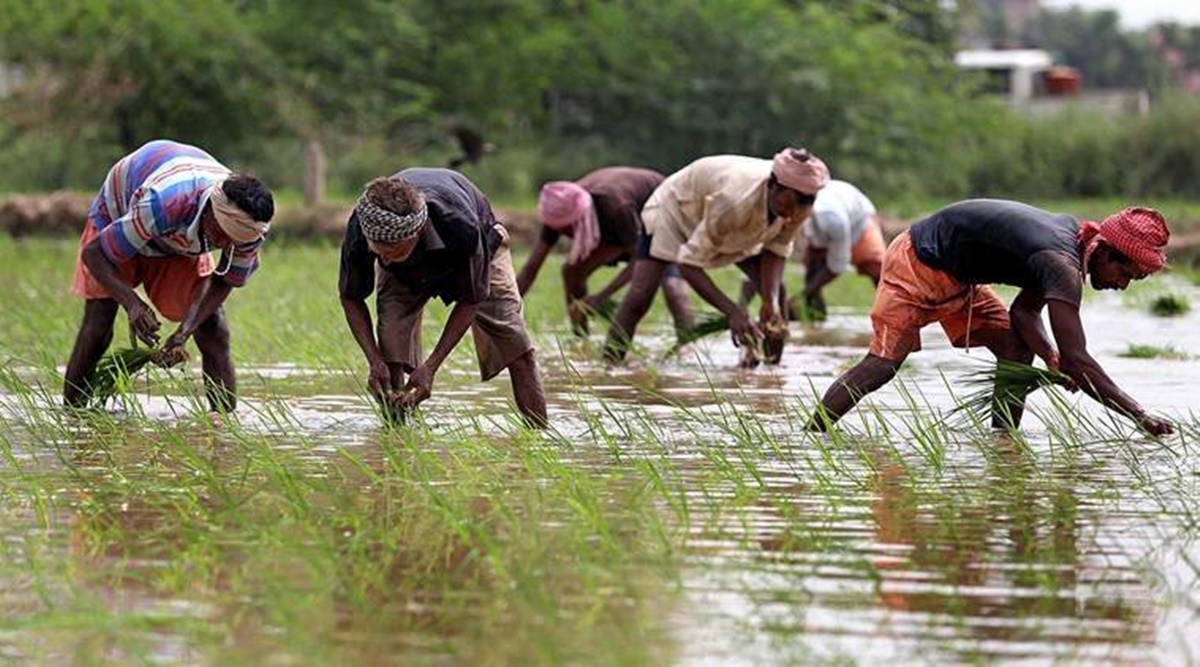Updated: March 5, 2021 8:34:05 pm
 The last year was marked by surplus rain in June, deficit rain in July, and surplus rain in August and September, as reported by the Ministry of Earth Sciences. (Representational Photo/File)
The last year was marked by surplus rain in June, deficit rain in July, and surplus rain in August and September, as reported by the Ministry of Earth Sciences. (Representational Photo/File) Written By Kritika A Gadpayle and Indu K Murthy
India has been witnessing variable monsoon for the past few years. The last year was marked by surplus rain in June, deficit rain in July, and surplus rain in August and September, as reported by the Ministry of Earth Sciences. This inconsistency in the monsoon rainfall pattern is an indication that extreme weather events might become the norm, rather than the exception, in the coming years. The Global Climate Risk Index 2020, released recently, puts India seventh in the list of countries worst hit by extreme events. This doesn’t augur well for the farming community, especially small and marginal farmers, and the agricultural yield in general.
Keeping the increased frequency of extreme weather events in mind, Google announced the expansion of its Artificial Intelligence (AI)-powered flood forecasting to all of India. The tool provides details on timing and water depth alerts in Hindi and Bengali, among other local languages. Meanwhile, the government of India launched an Extended Range Forecast System for climate risk management in agriculture, which is designed to improve monsoon forecasts. It also offers tailored climate information for farming and other rural livelihoods in nine monsoon-affected states of India, including Himachal Pradesh, Uttarakhand, Rajasthan, Orissa, and Tamil Nadu. However, these initiatives won’t be adequate as evidenced by increasing agricultural losses. More than 14.4 million hectares of India’s gross cropped area was lost in the agriculture cycle ending February 2020. This is almost seven times that of the previous cycle.
To address this grave concern of yield losses due to climate change, the government has announced its plan to re-evaluate crop-planting across the country to align agricultural practices with the changing climate. This requires a comprehensive assessment of climate risks to different crops at the district or block level, as there is variability in climate parameters—rainfall intensity, temperature, frequency and intensity of extreme events, etc., even within a state. Such variability and change in the form, magnitude and intensity of extreme events is evident in the district-level historical climate assessment conducted for Karnataka by the State Natural Disaster Management Centre.
A modeling study by research-based think tank, the Center for Study of Science, Technology and Policy (CSTEP), across all the districts of the state, projects an increase in summer maximum temperature (0.5°C–1.5°C), kharif season rainfall (7–28 per cent) and heavy rainfall events over the 2021-2030 period in Karnataka. Although an increase in seasonal rainfall and heavy rainfall events is projected across all the districts of the state, the occurrence of dry spells is not ruled out, particularly in the dry northern districts. Further, some of the northern districts are projected to record very heavy rainfall events of >100 mm/day in the future. This has huge implications for rain-fed agriculture in the state, which constitutes about 70 per cent of the net sown area.
The study also illustrates that there is no single dominant climate risk for all the districts in the state or the crops. For instance, the projected high temperature during the growth period of groundnut (a rain-fed crop) and heavy rainfall during the weeks coinciding with the reproductive phase in Kolar, Koppal, and Yadgir could reduce yield by 10–40 per cent. Similarly, a lower than optimum rainfall during the vegetative and flowering phase of maize—a dominant rain-fed crop—could reduce yield by 25–50 per cent in Davanagere, Chikkaballapur, and Chamarajanagar. Additionally, the projected increase in temperature in the range of 0.1°C to 0.5 in these districts could affect grain formation and the yield.
Such hazards underscore the importance of assessing climate risks at the district level. It also highlights the need for building resilience of rain-fed agriculture systems through established technical and institutional interventions, as well as innovative strategies.
The government of Karnataka could consider implementing crop insurance with a “no claims” process (piloted in Kenya) that, unlike traditional crop insurance, clears claims based on deviations in weather — which are then compared to indexed past weather data and correlated with production losses. Forecast-based financing for social protection (being piloted in Africa), a financial mechanism that anticipates hazards using a set of pre-agreed triggers (or danger levels) and predefined actions, is another option that can be looked at. Both require a dedicated budget.
The promotion of public–private partnership in agroforestry is another option that could provide an assured market for agroforestry produce, thereby providing income and livelihoods in the event of annual crop loss.
The implementation of long-term strategies that build the resilience of rain-fed agriculture systems in Karnataka will help stabilise rain-fed crop productivity in the state even when faced with adverse climate. Such measures will ensure that in the future agricultural yields are not left to the vagaries of climate and income losses to farmers are kept to a bare minimum.
(The authors work in the area of adaptation and risk analysis at the Center for Study of Science, Technology and Policy (CSTEP), a research-based think tank in Bengaluru)